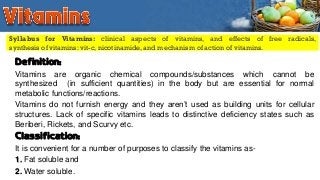
Many state and local governments have developed or are planning programs that prevent obesity. These efforts can promote healthy living and lower the body's fat. Local governments can assist in coordinating these efforts, focusing on the residents' needs. A community fitness center is one example of a local government-led program to prevent obesity. This is a great way to get kids moving and decrease calorie intake. A fitness center can also help a community remain healthy by providing facilities for physical activity.
A number of state governments have taken action to reduce obesity. The government could set a sugar reduction goal for consumers to help improve their health. Similar to the above, a portion reduction plan can be used to help achieve this goal. This type of program is also suitable for pregnant women and mothers with young children. All ages can reap the benefits of this program, even the elderly. Some people may not realize that these strategies are effective in their local communities.

The federal government has had a long-standing commitment towards nutrition and physical fitness, but obesity prevention has not been given much attention. As obesity is the most important health indicator in America, programs should be focused to reduce it. The President's Council on Physical Fitness and Sports has developed a national initiative called Fit 'n Active Kids and the Partnership for a Walkable America. America on the Move has been developed by the Partnership for Healthy Eating and Active Living. The program aims to prevent adult weight loss through increased physical activity and decreased caloric intake.
Another funding source for obesity prevention is the CDC grants. These grants can be used to fund programs that are designed for people with disabilities. The grant program of the CDC focuses on chronic diseases prevention and building local capacity. It is also able to help establish community demonstration projects. These grants were awarded to 20 states in FY 2003. Expanding the grant funds to the state level may allow for additional states to benefit.
There are many examples for public health programs that prevent obesity. The CDC provides funding to universities and states as well as communities for healthy eating and exercise. Its website has information about grantees as well as funding sources. It is important to note that public health programs do not address all causes of obesity. Some programs are not able to treat all forms of obesity. They can improve the health of the entire community by addressing the root cause of the disease.

New Jersey's health department is ramping up its fight against the bulge. It has created a body called the Office of Nutrition and Fitness to coordinate programs to prevent obesity. The state is regarded as the best state for children and adults. It is imperative that the government invests more in nutrition education for children who are overweight or obese. The federal government must support the efforts of these individuals to ensure their health.
FAQ
Egg is good for you?
The egg is rich in all nutrients needed by the human body. It aids in maintaining strong bones, healthy hearts, and lungs, as it also maintains stable blood pressure.
Eggs are an excellent source of protein, vitamins A, B12, D, E, K, calcium, phosphorus, iron, zinc, copper, magnesium, selenium, and riboflavin.
The egg yolk contains high levels of cholesterol. The egg yolk does not contain saturated oil. Eggs are lower in saturated fat than other foods.
They are also low on calories and sodium. Because they can be cooked in almost any way that you wish, they are versatile. They can be poached or scrambled, baked, hard-boiled, or fried.
They are very nutritious and easy-to-prepare.
Each day, you should consume at least 2 whole eggs. If you dislike eating eggs, you should add them to your diet.
Eggs are a good source of essential nutrients for our bodies. Try adding them to your daily diet today.
What is the Best Workout for Men Over 40 Years?
Older men will find that the best workouts give them more energy as well as improve their stamina.
It is important to remember that most people over 40 experience a decline in testosterone, leading to lower sex drive.
You can still exercise, however. There are many studies that show regular aerobic exercise can raise testosterone in some men.
An aerobics routine is a great way to increase your sexual performance.
What is a good seven-day workout routine?
Three days per week should be spent on cardiovascular training, including running, biking, swimming, and two strength exercises using free weights, weight machine, as well as one flexibility/core exercise such as yoga, Pilates. Each activity should be performed at least once each week. Each session should last no more than 45 minutes.
Cardiovascular Exercise: Running/Biking/Swimming
You should aim to get at least 60 mins of cardio exercise per week. Try to do 75 minutes per semaine for the best results. Cardio exercise can improve blood flow and stimulate muscle development.
Strength Training
Cardio exercises target your heart and lungs. Strengthening your muscles and bones is the opposite. Strength training can help you burn calories even when you're not working out.
Flexibility & Core Workouts
Core and flexibility exercises are great ways of strengthening your whole body. Both yoga and Pilates are excellent options.
Statistics
- According to the American Heart Association, blood pressure should be checked at least once every two years, beginning at age 20. (my.clevelandclinic.org)
- The PRS enabled risk stratification for overall prostate cancer and lethal disease with a four-fold difference between men in the highest and lowest quartiles (HR, 4.32; 95% confidence interval [CI], 3.16-5.89). (pubmed.ncbi.nlm.nih.gov)
- According to the American Academy of Dermatology (AAD), men over 50 are at a heightened risk of developing it. (healthline.com)
- An estimated calorie range for moderately active adult males falls between 2,200 to 2,800 calories per day, depending on age. (eatright.org)
- By John Thompson Take a whopping 38% off a set of PowerBlock Pros. (menshealth.com)
External Links
How To
How can I exercise to burn fat?
Exercise reduces calories by increasing metabolism, and oxygen consumption.
Exercise at a moderate intensity to safely lose weight.
These tips will help you burn fat and keep fit while exercising.
-
Cardio exercises include swimming, running or cycling.
-
Do 30 minutes of exercise three times a week.
-
Strength training is a great way to lose weight.
-
Avoid intense workouts. You can build muscle without having to lose muscle tissue.
-
Hydrate well during exercise. Water is essential for flushing out toxins and keeping your body hydrated.
-
Choose low-fat protein shakes after working out. Protein shakes can help boost energy and repair muscles.
-
You can eat smaller meals throughout the day so that you don't feel hungry in between meals.
-
Don't skip breakfast! Skipping breakfast can make you tired and sluggish.
-
Take care of your mind. Stressful situations can slow metabolism.
-
Keep a positive attitude. Research shows that overweight people gain more weight if they believe they are overweight than those who believe they look good.
-
Sleep enough. A lack of sleep makes it difficult to lose fat.
-
Always be active. Be sure to get up and move around every hour or two.
-
Maintain a healthy diet. Eat right to feel satisfied and full for longer.
-
Find relaxation methods. A tense mind doesn't allow your body to release stress hormones that break down muscle tissue.
A balanced diet is one that includes all of the essential nutrients required for growth.
You should eat six small meals per day rather than three large ones. This allows your body to properly digest what you have eaten.
For strong bones, we need 500 mgs of calcium daily. Calcium can be found as a dairy product such as milk, yogurt and fortified soy drinks, orange juices, cereals, breads, and cereals.
Calcium is found in leafy vegetables, beans and tofu, as well nuts, seeds and cheese.
Vitamin D is required by the body to absorb calcium. Vitamin D can be found in egg yolk, fatty fish, and other fortified foods.
Vitamin E is important for skin health. It can be found as a vegetable oil, wheat germ, peanuts or almonds.
Your body requires zinc to function normally and for wound healing. Zinc can be found in seafood, legumes and meats.
Zinc deficiency may cause fatigue, loss appetite, depression, and impaired immunity.
Eating too much sugar causes insulin resistance, which increases blood glucose levels. Insulin resistance leads to weight gain.
When there is a high level of free radicals, insulin resistance can develop. Free radicals can be molecules with unpaired electrons that cause damage to cell membranes.
The main sources of free radicals are food additives.
Free radical damage can cause cancer, heart disease and diabetes, as well as arthritis, asthma, and other diseases.
A well-balanced diet rich in antioxidants is the best way for you to avoid free radical damage. Antioxidants protect against oxidative damage.
Vitamin C is found in citrus fruits and beta carotene is found in carrots.
Selenium, manganese (and zinc) are other antioxidant nutrients.
Selenium protects cells from free radical damage. Selenium can be found in Brazil nuts and liver, kidneys, liver, kidneys, shrimp, cod, turkey and lamb as well as chicken.
Copper protects your eyes, brain, eyes and red blood cell. Copper is found in shellfishes, poultry, meat, organ meats, and other foods.
Manganese forms an essential part of bone structure. Manganese may be found in brown rice or spinach, bananas and prunes as well raisins, oatmeal and lentils.
Zinc is required for normal growth, reproduction and wound healing. Zn is found in lean cuts of meat, white fish, poultry, and eggs.